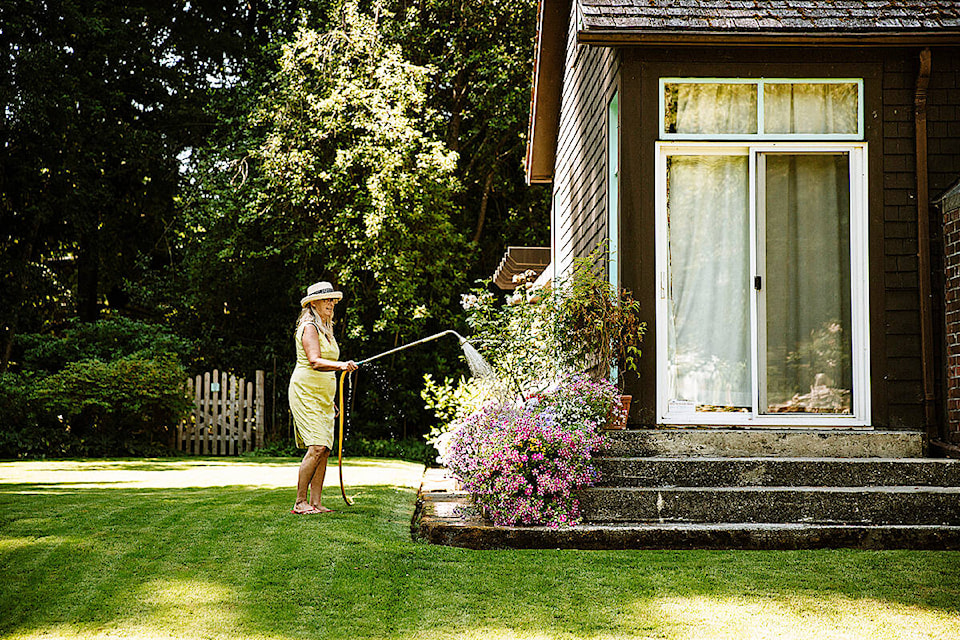By the staff at the Museum at Campbell River
Tucked away in a quiet corner, right along the banks of the Campbell River, there is a charming garden surrounding the Haig-Brown Heritage House.
The house was built nearly 100 years ago by Herbert Pidcock, and his wife Dolly soon after began the gardens. In 1936 they sold the house to Roderick and Ann Haig-Brown, and the Haig-Browns got to work transforming the gardens into a version of what we see there today. The initial focus was the vegetable patch. The property was a working farm and the Haig-Browns needed to produce food for the family. In his book Measure of the Year, Roderick Haig-Brown states, “Sometime during the war years Ann took over the vegetable garden and she has run it ever since, to the great good of the household, while I attend the frivolous flowers and trees.”
Perhaps one of the most defining features of the Haig-Brown garden is the lawn that runs from the house down to the river. In a letter written to his mother in 1940, Roderick notes, “We finally got the lawn seeded on Thursday after four summers of preparation. It is a lovely rolling stretch that runs right down to the river, with a 150-foot perennial border along one side, a thick fir hedge behind that and a barbary hedge along the bank. Along the house side we have a post and rail fence running to the river and climbing roses planted along it.” The plantings have changed over time, but this description still describes the style of the gardens today.
In his book Measure of the Year, Roderick talks about the seasons of the gardens, about the plants, the birds, and his observations of seasonal weather. He describes gardening in June in terms of the generosity of the flowers in their annual show.
“For June surely is the flower gardener’s month. My small border is rich then with irises and columbine and lupins and violas. And over and among them all the peonies, growing with a fine freedom and blooming with a magnificence that no gardener of my careless habits and feeble skill has any right to expect. What have I ever done for them? A deep, sandy loam is here, reinforced at the time of planting several years ago. I weed a little, and put on an annual mulch of peat moss; I scatter sulphur about the crowns of the plants in early spring if I remember to and stake and tie the foliage during May. That is all, yet they are the true glory of the border year after year, professional in their size and splendor, brilliant in every shade from deepest red to palest pink and cream and white. Only the cautious growth of the delphiniums behind them reminds me that my reflected glory will not outlast their honest performance.”
From a heritage perspective it is the vision of the garden that needs to be preserved. Managing a heritage garden can be challenging. A garden is never static, plants grow and mature, some thrive, and others succumb. When work is done today maintaining the garden, Roderick and Ann’s original vision of the garden is always kept in mind. Retired long-time gardener Marcy Prior reflected in an interview that “This was, I think, the garden they had always dreamed of.”
If you are taking time to observe the year of the garden, and will be exploring some local gardens, feel free to wander the grounds at the Haig-Brown House and enjoy the stunning colours that the summer brings. To learn more about life over the course of the year at the Haig-Brown House check out the podcast Taking Measure, that discusses topics from each month in Measure of the Year. www.haig-brown.bc.ca
